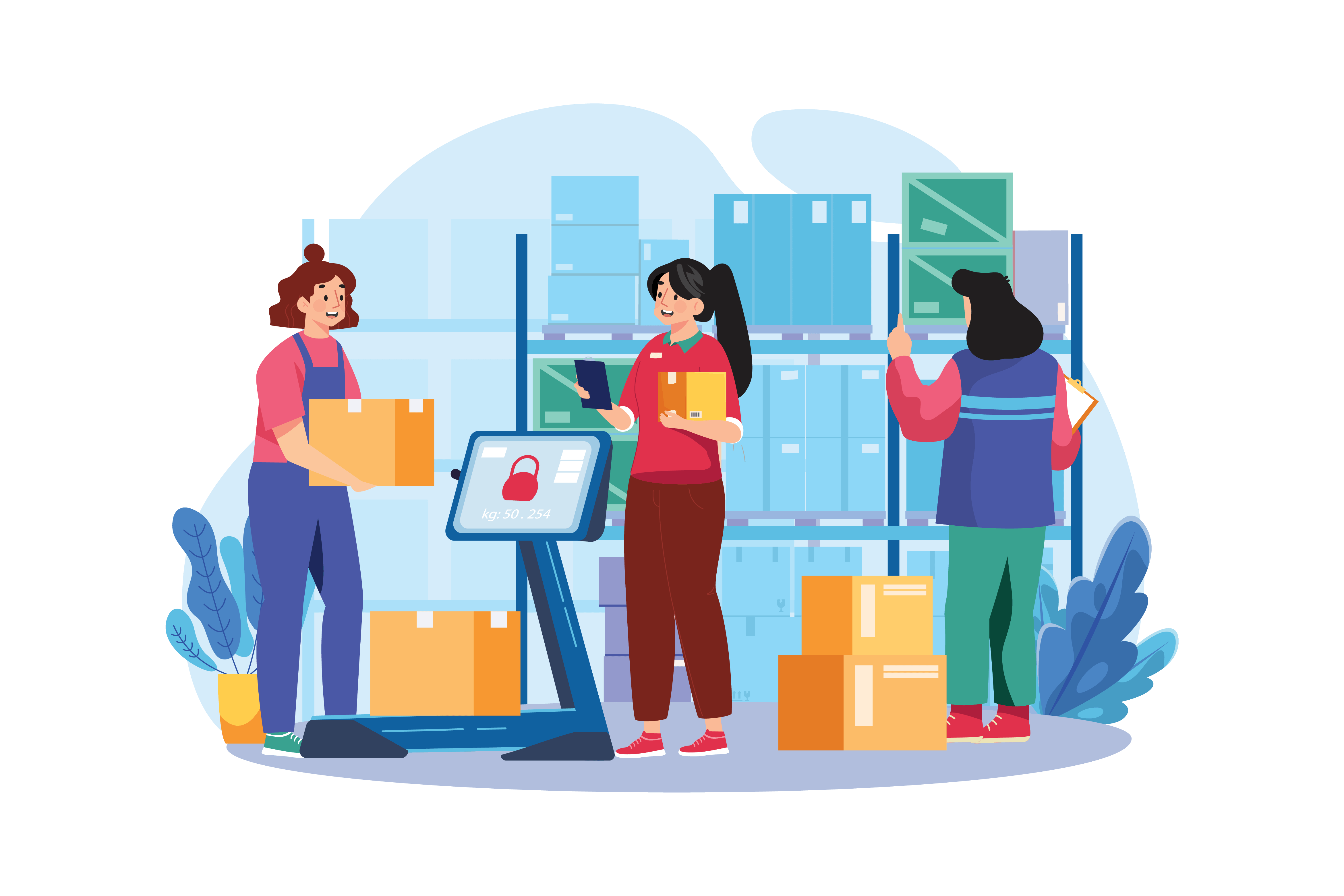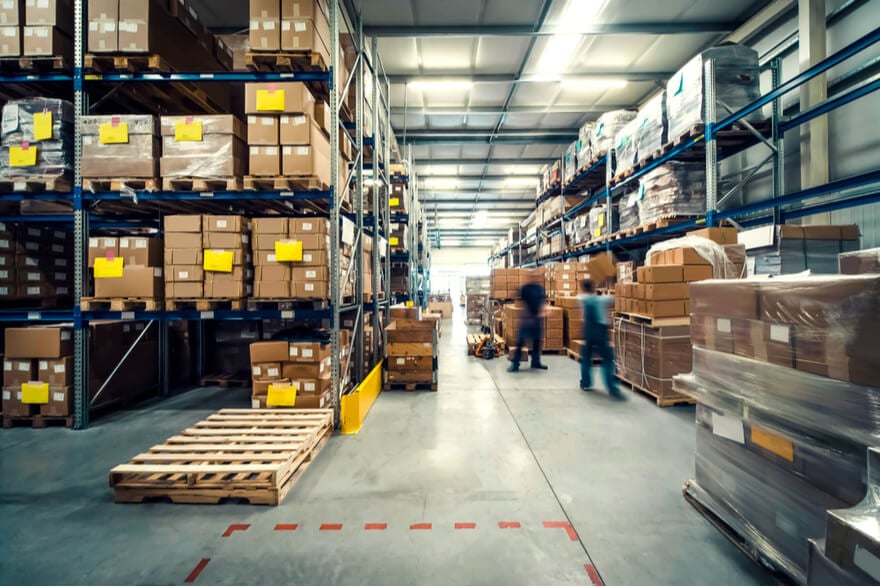Many Amazon sellers use FBA, you may even be one of them, but there is an alternative method of selling and fulfilment on Amazon, which may also be right for you. It’s called Amazon FBM (Fulfilment by Merchant) and simply involves you, the seller, managing all aspects of your Amazon business yourself including storage, shipping and customer service.
Part of ensuring your success on Amazon is understanding how to get your Amazon business set up and working correctly for you, making it as efficient and streamlined as possible.
This is why so many Amazon sellers use Amazon FBA (Fulfilment by Amazon) to store and ship their orders. It frees up their time and resources so that they can concentrate on researching, sourcing and marketing their products.
FBM is often overlooked by Amazon sellers who think, why would you deal with all of these things yourself when you could have Amazon doing it for you with their FBA service?
That’s a good question, but there’s more to Amazon FBM than you might realise. Let’s start from the beginning.
What is Amazon FBM?
Amazon FBM requires you to list your products on Amazon, store your own stock, pack and ship orders and deal with all customer service enquiries yourself or through another third party. So, Amazon is simply your listing venue, and everything else is done by you.
You create your FBM listing in exactly the same way as you would create a regular Amazon product listing, and in the Fulfilment Channel section, select ‘I will ship the item myself’ (Merchant Fulfilment).
It is sometimes referred to as Amazon MFN (Merchant Fulfilled Network).
Round-Up: Amazon FBM is a self-fulfilment option typically used by Amazon newbies rather than more established sellers. Mostly this is because it’s the only initial option available at start-up with FBA requiring more time to set up.
When Should You Use Amazon FBM?
Anyone can decide to take the Amazon FBM route, but running an Amazon business is never going to be a ‘one size fits all’ scenario. FBM will only be suitable for some Amazon sellers, not all.
Generally, Amazon FBM should be considered if you sell:
- Exclusive products with low sales frequency
- Small volume products
- Low-profit products
- Hard to ship products (e.g. oversized or fragile)
Also, consider Amazon FBM if you have:
- A third-party fulfilment service (other than Amazon) already in place that is cheaper than Amazon FBA.
- Handmade products in your inventory. Many handmade sellers like to use FBM to ensure the order arrives as intended.
Round-Up: Choose Amazon FBM if you are a newbie, have small volume or exclusive products, hard to ship products or handmade items.
What Are the Advantages of Using Amazon FBM?

Surprisingly, bearing in mind you will need to do all of the work, there are plenty of advantages to using Amazon FBM. This is true, mainly if you are new to selling on Amazon or only have a minimal inventory.
1. Understand How Your Amazon Business Works
Sometimes it’s good to control your business yourself rather than putting everything in the hands of a third party. This is important if you are a start-up as it helps you understand how your business works, lets you put better strategies and practices in place and ensures you have a sense of control.
By managing your inventory, profits, customer service and admin, you’ll have a clear overall view of how your business runs, making it easy to make better decisions.
2. Freedom to Easily Expand Your Amazon Business
By fulfilling all orders yourself, you’ll have full control over your stock levels at all times. You can quickly increase your stock when required without the worry of extra shipping fees and increased storage costs from Amazon FBA.
3. Avoid Strict FBA Requirements
While Amazon FBA can take away many of the tasks and processes involved in the running of your Amazon business, you will have to adhere to its strict rules and regulations. You’ll have no such issues with Amazon FBM as your standards are your own. All you need to do is concentrate on shipping orders promptly to keep your reputation intact.
4. Yield Greater Profits
Of course, this is not a given, however, with no FBA fees payable, if you have calculated your other costs correctly and have negotiated the best prices for your stock and shipping requirements, your profit margins should be better. You’ll save on fulfilment and storage fees compared with using FBA, mainly if you are selling large products with low-profit margins.
5. Direct Interaction with Your Customers to Build Your Brand
As an Amazon FBM seller, you will be required to provide customer service rather than have Amazon do it for you. This may sound like it will require tremendous effort (and some headaches) for you, but actually, it’s advantageous.
You’ll get a better understanding of your customer requirements and deal firsthand with all feedback, good and bad! This interaction, even when negative, allows you to gain valuable insights into the performance of your business as a whole and ensure your brand becomes known for the right reasons.
6. No Long Term Storage Fees
If you have a slow-selling product and you are using FBA, Amazon may charge extra storage fees to hold your products that sit for long periods in its warehouses. As you will hold your own stock as an FBM seller, this will not be an issue.
Related: How to Avoid Amazon FBA Long-Term Storage Fees
7. Consistent Sales and Shipping
During the recent COVID-19 pandemic, some Amazon FBA sellers were disadvantaged for several months because Amazon stopped all shipping via FBA for goods that were deemed non-essential.
FBM sellers, however, were able to continue with sales and ship without issue because the fulfilment of orders was entirely under their control. Should a similar situation occur, Amazon FBM sellers’ businesses will be largely unaffected.
What Are the Disadvantages of Amazon FBM?
Look, it would be great if there were no disadvantages to becoming a Fulfilled by Merchant Amazon seller, but as with every concept, there will always be some disadvantages too.
1. Picking, Packing and Shipping is Time-Consuming
Dealing with your own fulfilment is without a doubt going to eat into your time. You’ll need to be super hands-on and be prepared to dedicate many hours every week to your Amazon business.
2. Prepare to Commit More Time to the Day to Day Running of Your Amazon Business
This could be seen as a disadvantage or an advantage. On the one hand, spending time in your business is good because you get to really understand its workings which ultimately can be the key to your success.
On the other hand, you could find yourself getting bogged down with general admin, customer service issues and other tasks that can take you away from growing your Amazon business.
3. Shipping Fees May Be Higher
In theory, Amazon sellers who choose FBM and pick, pack and ship their own orders should have lower costs than those who use Amazon FBA.
However, while your storage costs may be more economical when you choose Amazon FBM, your shipping fees could spiral if you don’t negotiate a good deal with your preferred carrier.
4. Customer Service is Your Responsibility
As an FBA seller, you have the advantage of using Amazon’s customer service department, and they will deal with any queries, returns and refunds. There’s no such help with FBM. It will all be down to you.
5. Ineligibility for Amazon Prime
Unfortunately, FBM sellers are not eligible for the Amazon Prime badge. Prime is directly linked to helping you achieve higher organic rankings and so could potentially be a significant disadvantage for you unless you qualify for the alternative, Seller Fulfilled Prime.
This is a program you must apply to join, and current applications are closed although you can add your name to a waiting list.
How Much Does Amazon FBM cost?
Here’s the nitty-gritty and you might be pleasantly surprised.
As a Pro FBM Amazon seller, the subscription fee is $39.99 per month.
If you are not a pro seller, but an individual seller, there is no subscription fee, but you will incur a $0.99 fee for every unit you sell. So, if you’re selling more than 40 units per month, you should switch to the Pro package to remain cost-effective.
Amazon also takes a referral fee. This is because you are a seller on their marketplace, so they consider that they have referred customers to you.
The referral fee is a percentage of your total sales price. In most product categories, this is 15%, but it does vary from 6% to 45%, so you must check ahead depending on the product you are selling. Full seller fees can be viewed on the Amazon website.
You’ll also need to consider your shipping fees. Remember, it’s your responsibility to pack orders and ship them to your customers, and on-time. You should factor in not only the actual packaging and shipping fees but also your time spent picking, packing and shipping the order.
Round-Up: Take your average monthly sales and compare final costs as an individual seller and as a pro seller. Choose the most cost-effective option based on your monthly transactions, referral fees and shipping costs.
Can Amazon FBM Be Used With Amazon FBA?
Yes! What many Amazon sellers don’t realise is that FBM and FBA can be used simultaneously. The main advantage of this is that you’ll get the benefit of twice the exposure.
Doubling up is particularly beneficial if you have a large inventory containing a range of products with lots of different price points and profit margins.
Round-Up: Split your inventory between FBA and FBM. So, your fast-selling products with high margins can be fulfilled by FBA, and your lower margin, slower selling products can be fulfilled by FBM. Everyone’s a winner.
Which is Better – Amazon FBM or Amazon FBA?
That’s a tricky one! This will always depend on many factors based around your individual Amazon business, but here are a few pointers:
Choose FBA When:
- You have a fast turnover
- Your items are small and lightweight
- You have a decent profit margin
- You have a large inventory but no storage facility
- You can’t fulfil orders
- You don’t have time for efficient customer service
Choose FBM When:
- You have a slow turnover
- Your items are large or heavy
- You have a decent storage facility or small inventory
- You have some staff or can deal with fulfilment efficiently yourself
- You can deal with customer enquiries effectively
Related: Amazon FBM vs Amazon FBA: Which is Better?
Final Thoughts
Amazon FBM does have a lot of benefits even though it might seem like hard work! The control factor especially is an aspect of your Amazon business that shouldn’t be overlooked, and FBM gives you precisely that.
As an FBM seller, your reputation is ultimately your responsibility and critical to your success. With this in mind, you must ship all orders on time. To help you do so, Amazon offers a ‘Buy Shipping’ feature which includes tracking and will help ensure your fulfilment process is smooth and reliable.
Overall, Amazon FBM can be the perfect option to double up, or as a back-up plan so that you’re able to diversify or even pivot if necessary.


